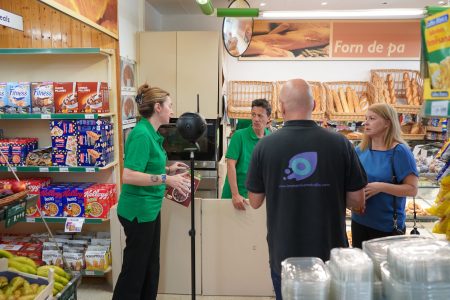La Vanguardia has recently published an article about the project we have carried out together with the University of Barcelona to introduce Virtual Reality in its practical classes.

Read the full article here
In this project we have designed a virtual tour to learn about the human body in detail. Specifically, we have developed an immersive experience using Virtual Reality to explain how the human heart works.
This resource has been used for the first time in the Physiology classes of the Podiatry degree, and will also be incorporated into the teaching of medicine (subjects of Anatomy and embryology of organs and systems and Medical Physiology II), biomedical sciences (subjects of Anatomy, Human Physiology I and II), podiatry (subjects of Human Anatomy and Physiology) and dentistry (subjects of Human Anatomy and Physiology Human).
The project, conceived and promoted by Professor Pepita Giménez-Bonafé, an associate professor at the Department of Physiological Sciences at the Faculty of Medicine and Health Sciences at the Bellvitge campus, aims to provide the necessary tools “so that students can immerse themselves in virtual environments to achieve immersive sensory experiences.” In this way, 370 students will be able to visualise through virtual reality how blood circulates in our body, how it moves through our veins and arteries and how it reaches the heart where it is pumped and distributed to all the blood vessels.
In this post you can read the interview about this project that we did with Pepita Giménez-Bonafé.

“An experience where our students are surprised by both the potential of these tools and how amazing our body is,” adds the teacher, who argues that virtual reality glasses are a very valuable tool from different fields and a great way to achieve an immersive sensory experience.
“My students want more, they have been left wanting to see more; it is like the first chapter of a series and you want to continue watching more episodes,” compares Giménez-Bonafé when she wants to explain the reaction of her students to this innovative project in which they have been able to observe the heart and lungs in great detail.
This news has appeared in various media outlets, such as this article from Redacción Médica. This publication from the University of Barcelona shows a video of how the whole process was.




